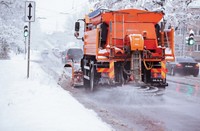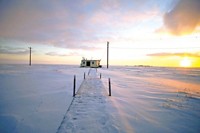Advertisement
Grab your lab coat. Let's get started
Welcome!
Welcome!
Create an account below to get 6 C&EN articles per month, receive newsletters and more - all free.
It seems this is your first time logging in online. Please enter the following information to continue.
As an ACS member you automatically get access to this site. All we need is few more details to create your reading experience.
Not you? Sign in with a different account.
Not you? Sign in with a different account.
ERROR 1
ERROR 1
ERROR 2
ERROR 2
ERROR 2
ERROR 2
ERROR 2
Password and Confirm password must match.
If you have an ACS member number, please enter it here so we can link this account to your membership. (optional)
ERROR 2
ACS values your privacy. By submitting your information, you are gaining access to C&EN and subscribing to our weekly newsletter. We use the information you provide to make your reading experience better, and we will never sell your data to third party members.
Atmospheric Chemistry
Movers And Shakers
Tracking air quality in the Arctic atmosphere
University of Michigan chemist Kerri Pratt and her team study climate-critical reactions with mass spectrometry
by Deirdre Lockwood, special to C&EN
May 19, 2020
| A version of this story appeared in
Volume 98, Issue 20

Kerri Pratt has always loved winter, cold, and snow. Now she works in the Arctic tracking myriad chemical reactions in the region’s atmosphere. The Arctic is warming faster than anywhere else on the planet, and her work is making sense of the rapid changes there and helping predict what’s to come. She is also investigating how oil and gas development in the Arctic is affecting air quality, which influences the health of its residents.
Pratt, an analytical environmental chemist at the University of Michigan, uses cutting-edge analytical methods to answer these questions, including single-particle mass spectrometry and chemical ionization mass spectrometry. Deirdre Lockwood spoke with Pratt about her fieldwork and research findings.
Vitals
Hometown: Brooklyn, Pennsylvania
Current position: Assistant professor of chemistry, University of Michigan
Education: BS, chemistry, Pennsylvania State University, 2004; PhD, chemistry, University of California San Diego, 2009; postdoctoral fellowship, Purdue University, 2010–13
Favorite part of the atmosphere: The Arctic troposphere—the portion of the atmosphere that “touches” the Earth’s surface and participates in a wide range of multiphase reactions involving snow, aerosols, and clouds
Most memorable fieldwork experience: A whaling captains’ meeting held by the native community of Utqiagvik (then known as Barrow), Alaska, during my first field campaign in the Arctic. We were requesting permission to conduct our measurements on the local tundra. Afterward, I was invited to a whaling captain’s house and later to the community-wide whaling blessing ceremony.
Biggest takeaway from these experiences: My fieldwork became broader than our measurements, and I gained a deep respect for the local Inupiat community and their traditional and local knowledge of the rapidly changing Arctic.
How did you get interested in chemistry and the Arctic?
I was originally an environmental science major in college, and someone told me that I could tackle whatever environmental problem I wanted to if I became a chemist. I then went and got a bachelor’s degree in chemistry. I learned through doing solid-state NMR [nuclear magnetic resonance] and mass spectrometry as an undergraduate that I really liked instrumentation.
My PhD adviser, Kim Prather, remembers me talking about the Arctic in my first year of my PhD, but the group was doing work in the Maldives. She introduced me to Paul Shepson at Purdue University, who studies Arctic atmospheric chemistry, so I went and did my postdoc there.
Why is it important to study the Arctic right now?
The Arctic is warming at over two times the rate of anywhere else in the world. The system is very sensitive, and there has been rapid, dramatic sea-ice loss in the last several decades.
What is it like to work there?
Imagine flying your custom instrument far away, putting it on the back of a pickup truck, then on a sled behind a snow machine, and hoisting it into a shed on the tundra. And then getting the instrument in the best possible shape to work, at the lowest limits of detection, despite power outages and frigid temperatures outside. Throw in isolation and 24 h of darkness during some campaigns just to test your mental stability. These are my research group’s normal challenges.
Tell me about one of your current projects there.
Until recently, I had two PhD students up in an oil field in Alaska, where we’re studying the interactions between atmospheric halogens and emissions from the oil fields. There is increasing development across much of the Arctic, where there’s drilling for oil and gas. And so we need to understand what we’re putting into the sensitive ecosystem, especially since combustion emissions contribute to warming. And then we also need to understand the reactions that these emissions undergo under the unique conditions of cold and dark.
How do the atmospheric reactions you’re studying impact Arctic ecosystems?
Mercury—primarily from human-made sources around the world—builds up in the Arctic atmosphere. That’s important because mercury is toxic when it bioaccumulates in ecosystems in the form of methylmercury.
When elemental mercury in the atmosphere is transformed into Hg(II), it deposits on the Earth’s surface and can enter ecosystems. Until recently, researchers suspected that bromine atoms were reacting with elemental mercury to form Hg(II), but no one had measured bromine atoms in the atmosphere.
We were the first to measure atmospheric bromine atoms, using chemical ionization mass spectrometry (Proc. Natl. Acad. Sci. U.S.A. 2019, DOI: 10.1073/pnas.1900613116), which allows us to measure trace gases at single-digit parts-per-trillion levels and lower.
We showed that the dominant source of the bromine atoms is Br2, a gas that is photochemically produced in the snowpack. Br2 photolyzes to produce these bromine atoms. Our measurements quantitatively showed the reaction of bromine atoms with elemental mercury.
How does the melting of sea ice influence the atmospheric reactions you’re studying?
We have studied fractures in the sea ice that look like rivers flowing through the ice. These cracks can produce particles, similar to production of sea-spray aerosols over open water. And those sea-spray aerosols can form cloud droplets. You also have more convection, which leads to clouds forming. For accurate climate modeling of the region, you really need to be able to predict clouds, which means you need to understand the particles that are forming the clouds.
You’re also coleading an initiative to study air pollution in the Arctic. Why?
With increasing development in the Arctic and given the many communities there, we need to understand their air quality. One of the first field campaigns as part of this initiative will be held next winter in Fairbanks, Alaska, which has some of the worst air quality in the US. Researchers from across the US and Europe will each contribute unique measurements of the air in Fairbanks, and there will be a citizen science project as part of the work.
Most of our understanding about atmospheric pollution chemistry is based on studies in warm, sunny conditions. Fairbanks in the wintertime is cold and dark. The air-quality models cannot predict the composition of the air there. We’ll be going there with our single-particle mass spectrometer.
What can you learn with the single-particle mass spectrometer?
We can distinguish between different types of particles. Each particle has a chemical fingerprint, based on the ions that are produced when you hit it with a laser in the mass spectrometer. For example, we showed recently that the particles over an oil field in Alaska were sea-spray aerosols that had undergone reactions in the atmosphere, in addition to diesel soot and amine-containing organic sulfate particles linked with the oil field (Environ. Sci. Technol. 2019, DOI: 10.1021/acs.est.9b04825). There are only a handful of these instruments in the US, and we’re the only ones who have deployed it on the ground in the coastal Arctic.

Deirdre Lockwood is a freelance writer. A version of this story appeared in ACS Central Science: cenm.ag/pratt. This interview was edited for length and clarity.





Join the conversation
Contact the reporter
Submit a Letter to the Editor for publication
Engage with us on Twitter